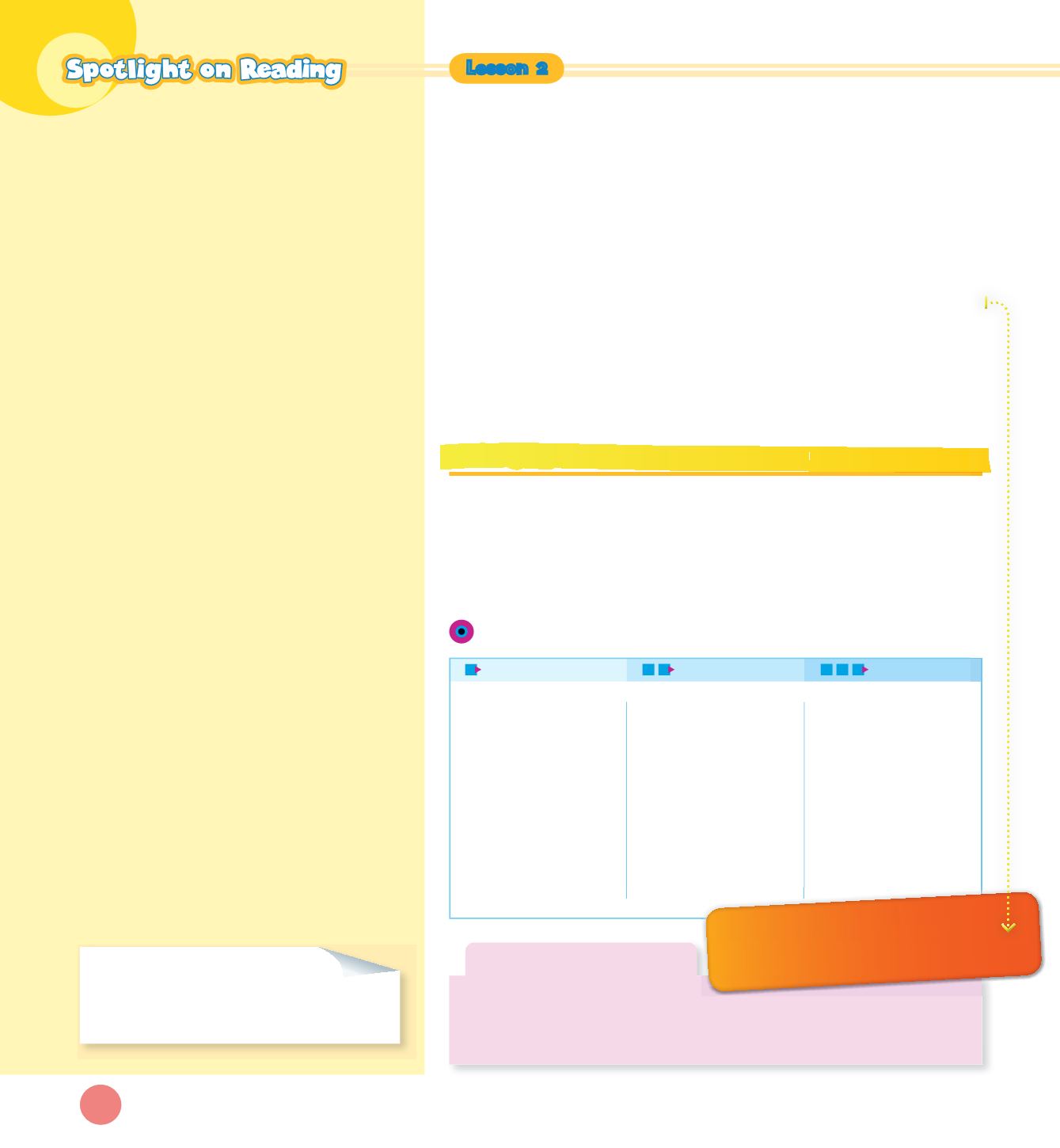

Key Vocabulary
community
mayor
torn down
history
patrol
town hall
library
reporter
traffic
local
theater
train station
Functions and Forms
Q
Describing places and things
The theater was beautiful and a fun place to go
to see movies.
Q
Identifying community locations
Our community has a library and a Town Hall.
Q
Retelling/relating events
Houdini performed at the theater in 1917.
English Language Development Skills
Listening
+
Connect and relate prior experiences, insights,
and ideas to those of a speaker.
+
Respond to questions with appropriate
elaboration.
Speaking
+
Organize ideas chronologically or around major
points of information.
+
Use clear and specific vocabulary to communicate
ideas/establish the tone.
Reading
+
Use a dictionary to learn the meaning and other
features of unknown words.
+
Recall major points in the text and make
and modify predictions about forthcoming
information.
+
Extract appropriate and significant information
from the text, including problems and solutions.
Writing
+
Understand the structure and organization of
various reference materials.
+
Write descriptions that use concrete sensory
details to present and support unified impressions
of people, places, things, or experiences.
Materials
Blackline Masters 1, 2a, 2b, 4, and 5
dictionaries
Unit 4
My Community
112a
Frontload Vocabular y
VOCABULARY DEVELOPMENT
Use the
Community
Photo Cards that show places and people to elicit some
of the key vocabulary words. Point to the Key Words section on page 112
and chorally read the word list with the class. Tell students that the photo
cards represent the people and places in communities. Have students write
the Key Words down the left side of a sheet of paper. Ask students to
identify the photo cards that correspond with their vocabulary words. For
example, students would match the word
librarian
to the place where she
works, the
library
. Have students write the name of the corresponding card
next to the appropriate Key Vocabulary word they chose to match each
word.
Note:
The phonics activities on the back of each photo card may be
used to supplement instruction.
Predicting
Student Book page 112: Remind students that predicting is guessing what th
story is going to be about. Distribute a copy of the Prediction Chart Graphic
Organizer to each student. Have students use the Prediction Chart to write
their predictions. Then, have students read and discuss their predictions as
you record them on the board to use at the end of this lesson.
Lesson 2
Have students explain
the meaning of the
title. Then, help them
answer question 1.
Remind them what
a clue is, and elicit
predictions from the
Key Words definitions.
Finally, help them fill in
the Prediction Chart.
Have each student
write the answers
to the Predicting
questions. Then,
ask them to fill in
the Prediction Chart
explaining what
clues they found in
the Student Book to
help them make such
Have students work
in pairs to discuss the
meaning of the title,
illustrations, and Key
Words in relation to the
prediction questions.
Ask the pairs to answer
the questions in
complete sentences,
and then fill in the
Prediction
Beginning
Intermediate
Advanced
Targeting Proficiency Levels
Meeting Individual Needs
You may simplify instruction for students who exhibit difficulty with making
predictions by asking them probing questions, such as
What is a title? What’s an
example of a title? What’s the relationship between a title and a story?
predictions.
Chart.
Prediction activities
enhance prediction
through visualizing casual relationships.
e
ORAL LANGUAGE DEVELOPMENT


















